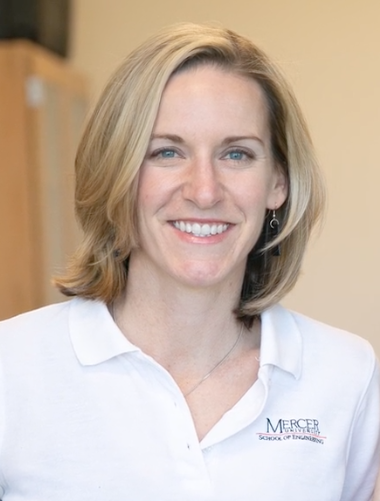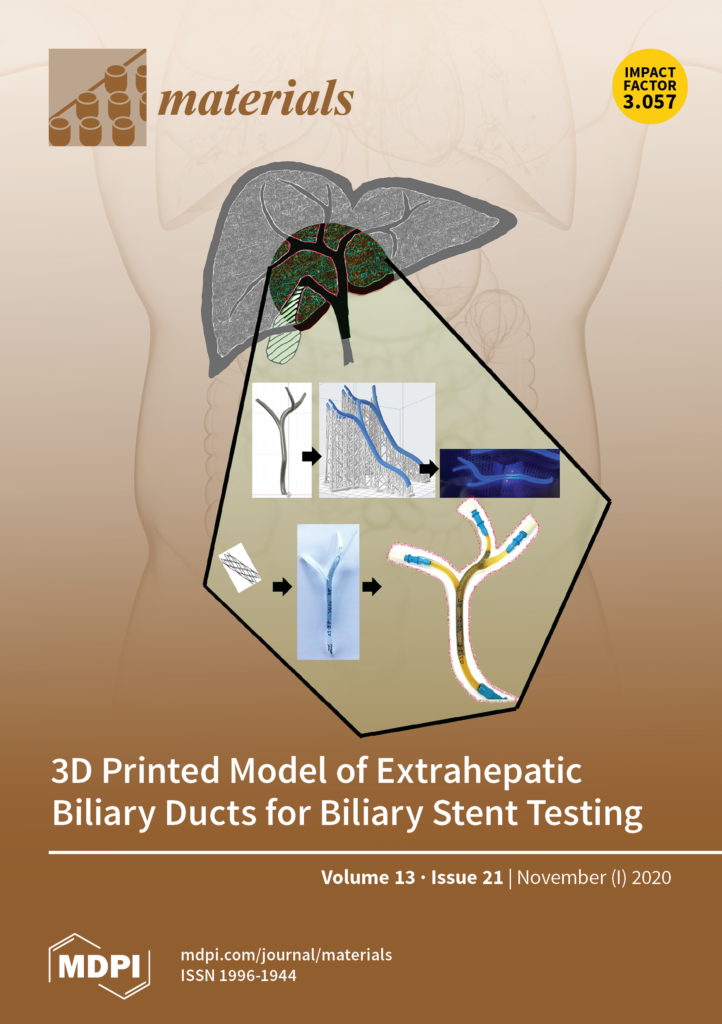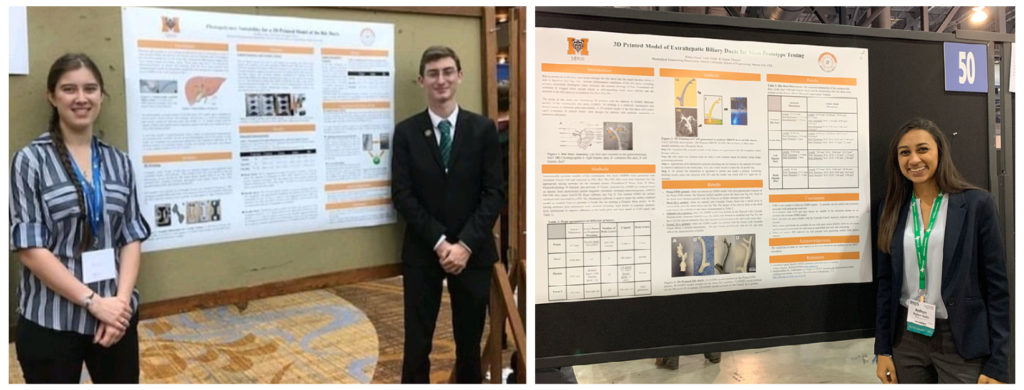Research by a Mercer University biomedical engineering professor and students has been featured on the cover of the journal Materials.
Dr. Joanna Thomas, who is also coordinator of undergraduate research for the School of Engineering, co-authored the paper about 3D-printed models of bile ducts with Mercer undergraduate students Leia Troop, Robyn Guru and Nicholas Faist and adjunct engineering professor Sagar Patel, who is a Mercer alumnus. Dr. Brian Bellot and Bethany Esterlen from Western Illinois University were also collaborators on the project. This November edition of Materials is themed around 3D printing in medicine.

“I’m really pleased with the research efforts of my students,” Dr. Thomas said. “To have our work featured on the cover is exciting and hopefully will lead to interest in that field and potential collaboration opportunities for my students and myself. We’re eager to see where this research takes us.”
The extrahepatic biliary ducts in the body carry bile outside of the liver, but some inflammatory conditions can prevent this necessary drainage from happening. One way doctors fix this problem is by inserting a small tube called a stent into the blocked bile duct to reopen it.
Through her previous work, Dr. Thomas realized there really wasn’t a great way to test new designs for stents. She saw that some researchers were testing stents in plain plastic tubing, but that material didn’t stretch like human tissue. She thought her team could design a better testing system using 3D-printed models made out of material that is more similar to the human body.
In the end, the Mercerians created an anatomically-correct model of the bile ducts with tissue-like mechanical properties, which will allow for more accurate and life-like results while testing new stents. Right now, it’s a universal model, but the goal is to eventually be able to use MRI and CT scan data to create models that are exact replicas of individual patients.
“Our system is a better testing apparatus, so we can make new stent designs,” Dr. Thomas said. “We can do patient-specific stents and then have the ability to test them in a model of their anatomy. It’s personalized medicine.”

The team started on the project in early 2019. Troop, Faist and Guru helped Dr. Thomas create the digital file for 3D printing and test 3D printers to find one that would best meet their needs. They also assessed a number of possible printing materials and even tried making their own polymer before deciding on a commercial material, Dr. Thomas said.
They tested the materials for stretch and elasticity and evaluated them under physiological conditions, including exposing them to water and simulated bile solutions. They also presented posters on their research at National Biomedical Engineering Society conferences.
“I started doing this work because I was interested in it, and now it’s cool that I have something I’m published under,” said Faist, a junior biomedical engineering major on the pre-med track. “There’s still a lack of different types and novel types of biliary stents. This model, the idea is to be able to test stents rapidly to figure out what’s effective quicker, so there’s more designs and opportunity for stents to be developed for the bile ducts.”
Guru, a fourth-year biomedical engineering student in the 4+1 Master of Science in Engineering program, said she saw first-hand how much inflammation of the bile ducts can affect people when she sat in on some hospital procedures.
“(This project) is so innovative. There’s not anything out there like it. It can help a lot of people because this is a common issue,” said Guru, who has been working with Dr. Thomas since her freshman year. “We’ve been working so hard for so long. I always knew that the research that we were doing was going to be really impactful, but the fact that we have a paper out now makes it really special.”
Dr. Thomas and her team are now working on some new stent designs and plan to pursue patents for them. Faist said he is continuing his work with Dr. Thomas and tying it into his honors engineering project.
“You’re always looking one step ahead,” Dr. Thomas said. “The best projects (are the ones where) you can build on what you’re doing. There’s always another phase.”











